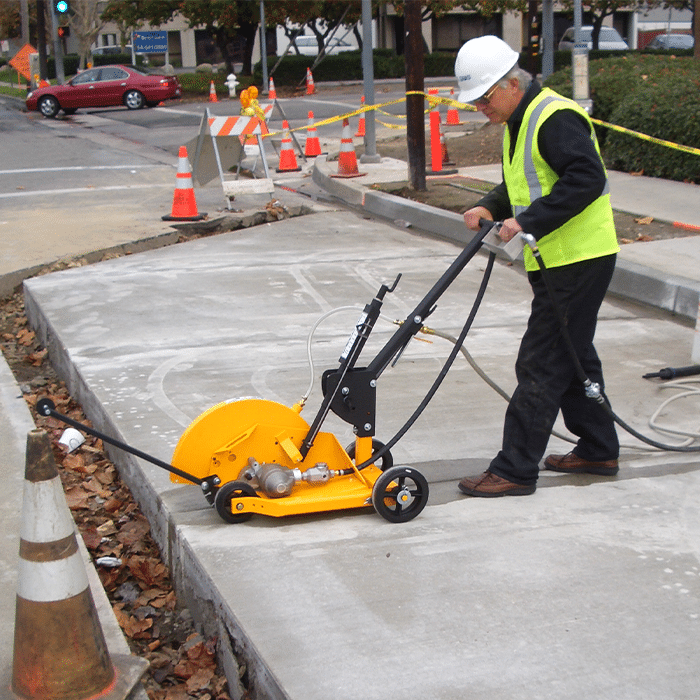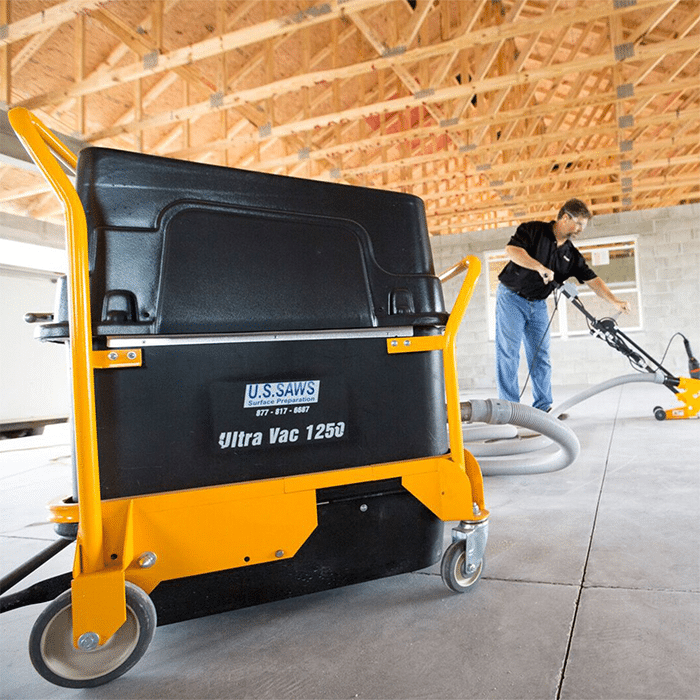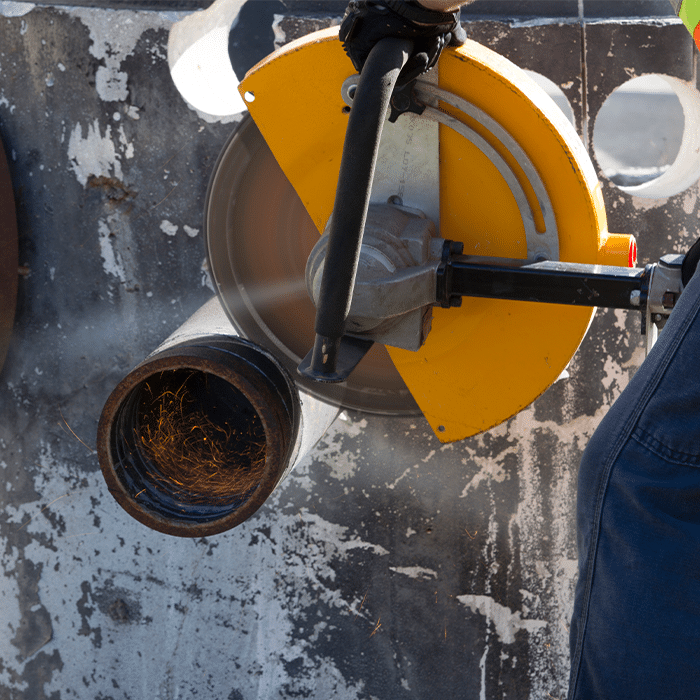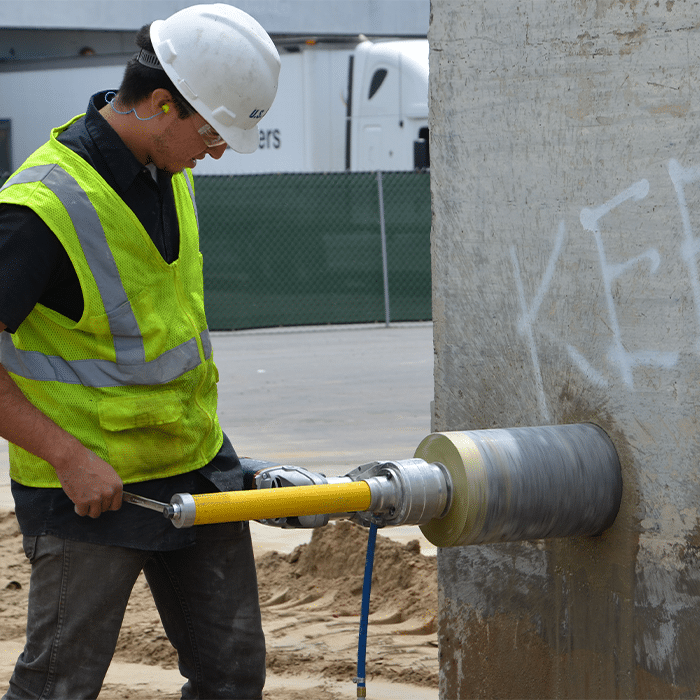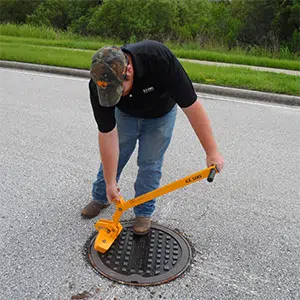Concrete saws are a necessary tool for any contractor’s workshop. As concrete proves itself to be a widely versatile material and more businesses and residents choose concrete for their spaces, the contractors’ reliance on concrete saws will increase. One way to reduce the back breaking nature of concrete surface prep is through the use of a walk behind saw.
Cutting Concrete with a Walk Behind Floor Saw
Cutting concrete is an essential part of concrete surface prep. Concrete requires specialized cuts in its surface to prevent cracks. There is no way to prevent cracking in concrete, but contractors are able to control the location of the cracks by initiating the cracking purpose on first, before the concrete fully sets and cracks. These intentional cracks are control joints. Control joints are created by using a walk behind floor saw equipped with wide tires to limit indentations in the fresh concrete. Once the control joints are placed, they are filled with a variety of joint fillers, including polyurea and epoxies. Over time, as repairs or remodeling occurs, those joint fillers need to be removed before any work can be done to repair or resurface the concrete. Walk behind saws are a fast and efficient option or what could be laborious work.
The purpose of the walk behind saw is to let the saw do the work. The control joints are not deep cuts, but do need to be precise. U.S. SAWS manufactures walk behind saws and walk behind joint clean out saws that are powered by air, hydraulics or gas. These saws are equipped with heavy duty frames that reduce vibration which could interfere with the cut. They even come with water feed kits to allow for wet cutting of concrete which will reduce the amount of silica dust produced from the cutting action.
Cutting Asphalt with a Walk Behind Saw
Asphalt is a much softer surface than concrete and requires the use of a different blade to cut the surface. Asphalt requires a diamond blade with a hard bond, as opposed to a soft bond. Because the surface is different than concrete, the way in which the surface is cut changes as well. Cutting asphalt, just like concrete is not a walk in the park. Prior to cutting asphalt, it is important to fully clean the surface. Cleaning the surface ensures there is no debris in the way when you do your cut. Large debris can damage the saw or even cause injury to the operator if not removed prior to cutting. It’s critical that cuts in the asphalt are precise. In order to ensure those cuts are precise, marking the area to be cut is key. In order to cut a swath of asphalt out to provide access to the area beneath it, the saw operator must cut the initial side, then lift the saw in order to reposition it. If the saw is not lifted and merely turned, the operator risks damaging the saw blade.
Tips for Cutting Concrete with a Floor Saw
The first tip for cutting concrete with a floor saw is to ensure the surface is clean. Removal of any debris is the key to a precise cut. As with asphalt, larger debris hit by the saw during the cutting action can cause damage to the saw, can cause injury to the operator, and can cause the cut to be thrown off its trajectory. Second, make sure you are wearing your safety gear. Wearing safety gloves, safety goggles and a face mask will help ensure you complete the job in a healthy manner with all digits in place.
U.S. Saws is an innovator in the tool industry. As concrete flooring gains popularity, U.S. Saws remains on the cutting edge of tool manufacturing for concrete surface prep. Contact U.S. Saws today to find the right walk behind saw for your concrete job.
